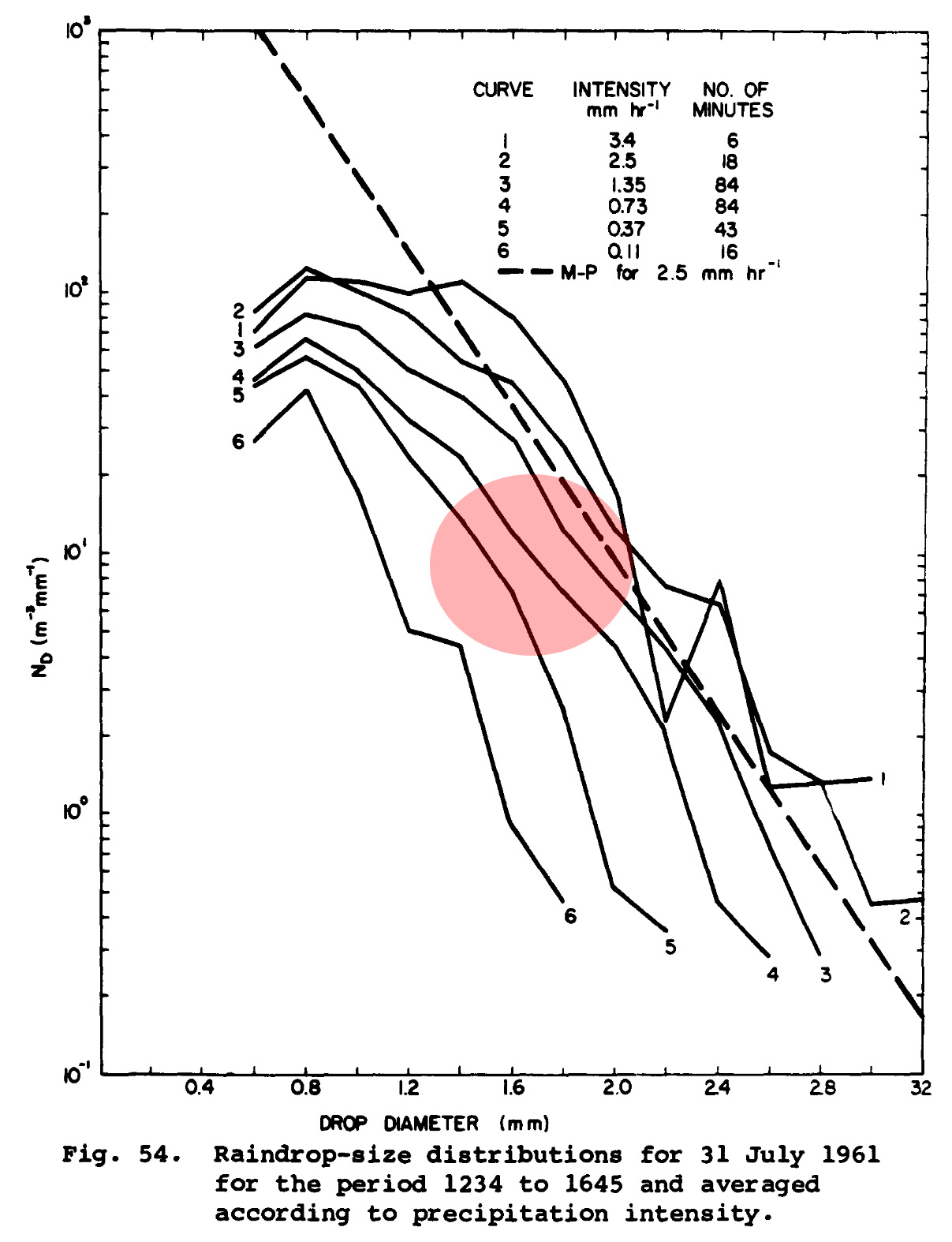In my previous post, I suggested that $5.6 billion was a drop in a bucket compared to total US exports of $1.5 trillion. But is it? Just how much is a drop in a bucket, anyway?
Obviously this depends on the size of the bucket, but that’s the easy part. The hard part is figuring out the size of a drop. Querying the internet produced a surprisingly wide variation of estimates that were seemingly based on nothing at all until I finally found this:

Now that’s what I’m talking about. This is old-school science from some guys at the University of Michigan doing contract work for the Air Force, for whom raindrop size and distribution were presumably important. So they went out to Flagstaff and used their radar gear to measure the average size of raindrops.¹ After 100+ pages of explaining why this is so hard blah blah blah, Figure 54 is their final distribution plot. The red circle is my eyeball guess at the average, which is a raindrop diameter of about 2mm.² That gives us a radius of 1mm and a volume of 4 cubic millimeters. At a million cubic millimeters to the liter, that’s 250,000 drops per liter, or about 1 million drops per gallon. This means that a common 3-gallon bucket holds about 3 million drops.
So a “drop in a bucket” is 1/3,000,000, or about 0.00003 percent.
As for our exports to India, $5.6 billion is 1/300th of $1.5 trillion. That’s 10,000 drops in a bucket. I stand corrected.
¹Note that I am defining “drop” as “raindrop.” Raindrops, it turns out, are quite a bit smaller than, say, a drop from an eyedropper (75,000 per gallon) or a leaky sink (15,000 per gallon)
²Which, I admit, is roughly what the internet was telling me from the start. Still, it’s always good to have hard, typewritten data to back up your Google searches.
UPDATE: Sorry, I got my cubic millimeters mixed up with my cubic centimeters, so my original post was off by a factor of 1000. No big deal between friends, right? It’s all corrected now. Thanks to the many people who pointed this out.

















